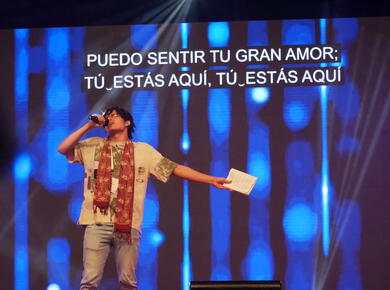Posted: November 5, 2024
Introduction
Do you remember any specific smell?
Our sense of smell is one of the most interesting senses we have. Smell can bring pleasant memories of a meal you loved as a child, and unpleasant odours can elicit disgust.
Church unity is like your sense of smell: it fills you with hope and strength when you experience it, or it makes you want to disengage and run away when poorly managed conflicts make it evaporate.
This is what Psalm 133 is all about.
Literary context
Psalm 133 is part of a group of 15 psalms referred to as “songs of ascents”.
The first psalm in the collection, Psalm 120, expresses the pain of discord and hostility while Psalm 133, at the end of the collection, responds to the question asked in Psalm 120: How can we speak about peace in the midst of a society that chooses war?
Historical context
It’s possible that the pilgrims who had lived through the exile used the songs of ascent when they would go to Jerusalem to celebrate a major festival. These are brief psalms that, when sung, reinforce beliefs and fundamental values that remind us of oppressive contexts and suffering like that of the Israelites in exile.
A study of the passage
The visible reality of unity
Even though some versions do not translate the first word following the title, hinneh, or “look”, is very significant. The invitation in the text to “look” indicates that the unity of God’s people is not merely something spiritual or something we only enjoy after death. The unity of God’s people is a tangible reality that can be seen and experienced in the here and now.
In the second century, Tertullian said, “Look how they love one another”.
The drawing reality of unity
Unity is a blessing that brings more blessings; it is a lengthy and abundant life; it is the aroma that spreads; it is the dew that soaks.
Just as a pleasant smell draws people, the unity of God’s people is something that everyone longs to experience and becomes irresistible when it is found. It is like when you are very hungry and pass by a restaurant that emits the aroma of your favourite dish.
In the same way, when you find unity in the middle of a sea of discord and conflict, you don’t want to let go of it.
The received reality of unity
The passage speaks of oil and dew that descend. The oil flows to the collar of the priest’s vestments where the precious stones on his chest symbolize the tribes of Israel. The dew brings coolness and fertility from Mount Hermon to Mount Zion.
This is what characterises the unity of the Israelites: It’s given by God and received by God’s people.
True unity is not built or reached through human agreements about doctrine and practice; it is a gift from God.
Application
Psalm 133 describes the reality of unity without explaining how to receive it in practice. Colossians 3:14 affirms that love makes unity possible. 1 John 4:7-21 explains that love is the only evidence that we know God. Divisions in the body of Christ are like a stench that repels others.
Meanwhile, church unity attracts others through the evidence of a supernatural love that unites disciples in harmony despite their differences.
We pray that the next 500 years in the history of the Anabaptist movement are marked with the love, reconciliation, and the gift of unity that draws those who are weary of a destructive world full of division, nationalism, political polarization and interminable wars.
—César García is general secretary of Mennonite World Conference. Originally from Colombia, he lives in Kitchener, Ontario, Canada, with his wife Sandra Baez.



Join the Conversation on Social Media
FacebookTwitterInstagramFlickrYouTube